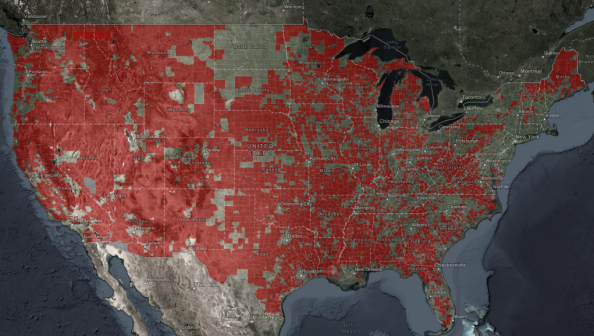- Sponsored
- State
How government can work with industry to maximize federal broadband funding

Bill Price is LightBox’s Vice President of Government Solutions and has extensive experience with internet service providers across state and local governments to expand broadband services and increase adoption.
The pandemic gave broadband access a new urgency. Disadvantaged citizens who lacked internet service were unable to access essential public health, education or job updates —affecting families across the country and furthering the digital divide. Signed into law late last year, the Infrastructure Investment and Jobs Act (IIJA) tries to improve digital equity with its historic investment of $65 billion for broadband projects aimed at unserved communities.
Additionally, the bill establishes a variety of different grant programs for states and territories to expand broadband infrastructure and technology investments, with the largest being $42.45 billion for the expansion of broadband infrastructure construction. The IIJA funding is on top of the American Rescue Plan’s (ARP) $10 million for broadband capital projects.

But to take advantage of the funding opportunities and close the digital divide, officials need an accurate representation of where broadband gaps actually exist. And time is of the essence if state and local government leaders want to maximize access to all available funds to build broadband equity.
The importance of location data in broadband initiatives
The IIJA provides each state and territory with an initial investment of $100 million for expanding broadband infrastructure. A more significant portion of the remaining funds will be distributed after the Federal Communications Commission (FCC) has more accurate broadband-coverage data of unserved locations in the state. The ability for a state or local government to develop their own accurate map of broadband coverage will be key to ensuring that they get their fair allocation of the $42.45B of funds from IIJA that will be distributed after the FCC completes their map.
Unfortunately for many states, FCC’s broadband mapping programs have been historically inaccurate due to flawed methodology, hindering critical decisions that could cost states millions. Federal broadband funding will continue to miss the communities that may need broadband most without correct data.
While many states may have solid address data, addresses alone are insufficient in a broadband mapping initiative. Accurate location data requires the ability to connect address data to building structures, parcels and property data in order to identify broadband serviceable locations. States and local agencies can conduct their broadband mapping with the help of commercial data companies like LightBox. These companies can offer additional guidance and education to help agencies with their broadband mapping..
Leveraging public-private partnerships with commercial providers
By working with commercial data providers, governments can make smarter long-term infrastructure investment decisions.
Commercial data providers, for instance, can collect and merge coverage maps from internet service providers (ISPs) with an existing view of broadband serviceable locations in a matter of weeks. LightBox, for example, worked with the Georgia Technology Authority and various partners, using LightBox Location Fabric data to gain an exact, comprehensive picture of every address statewide.
After layering ISP coverage data from 44 providers, Georgia produced the most granular broadband map to date and identified more than 500,000 unserved locations.
More recently, the state of Montana announced its partnership with LightBox to ensure it has accurate location data, analytics and broadband maps. With newly available federal infrastructure funding, states can harness these more accurate mapping services to incentivize the ISPs to expand their network infrastructure to underserved areas where they may have otherwise not considered profitable to lay fiber or build towers.
When considering a broadband mapping service provider, agencies should assess a provider’s capabilities and expertise with geospatial data and location intelligence. And they should look at a provider’s track record working with the government and ISPs — since broadband mapping requires fusing private and public data.
Broadband services have become a critical engine for economic growth in every state. States now have a rare opportunity to expand and upgrade their broadband infrastructure with federal funds. But getting the most of that investment will depend on having an accurate investment roadmap.
Learn more about how LightBox can help your organization on its broadband mapping goals.






